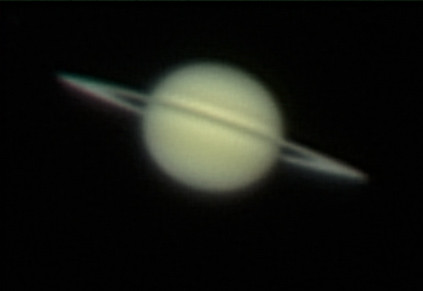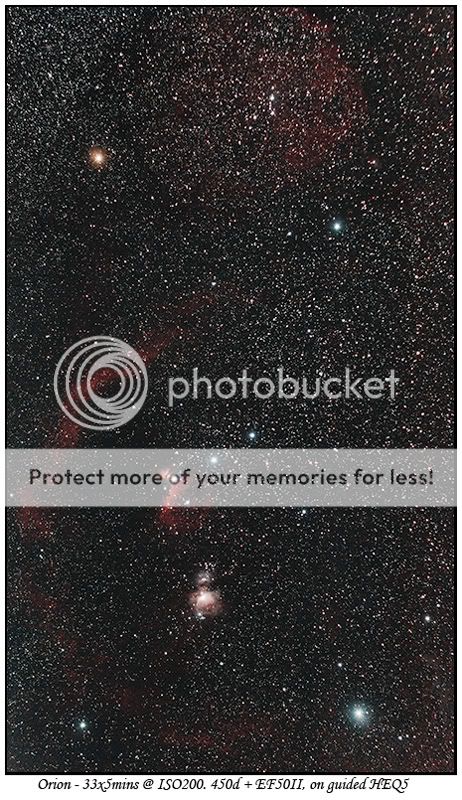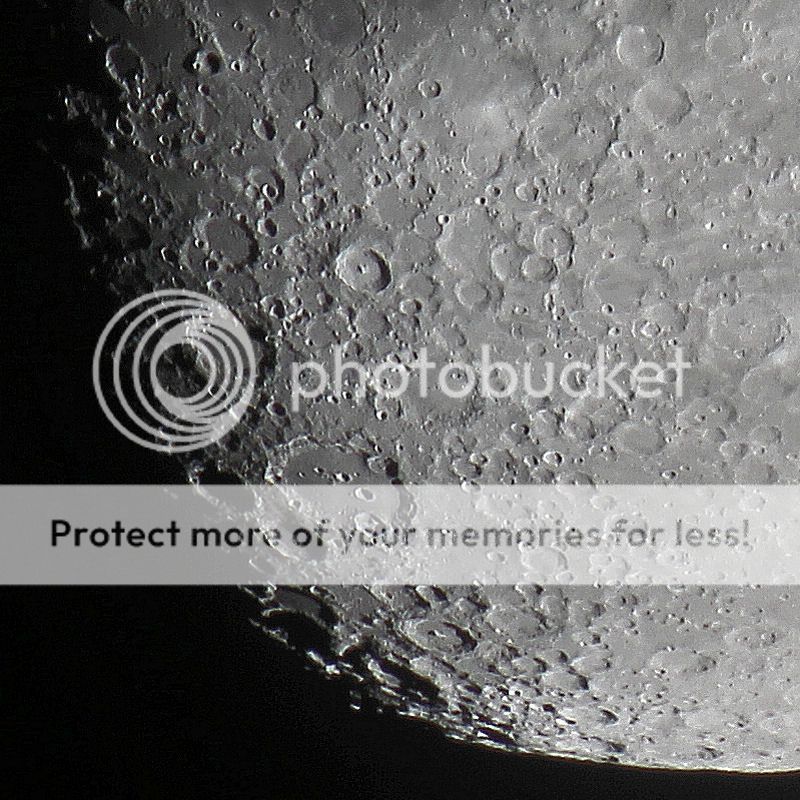In Astrophotography... for anything other than the moon and planets... the mount is key (the mount helps a lot of you are wanting to get any scale on the planets). For the moon, it's relatively easy, with a £200 scope (as mentioned by Andy) and an SLR to get a decent result
mounted on my redsnapper
http://www.talkphotography.co.uk/forums/showthread.php?t=269766
For Deep Sky, unguidded you're looking at an average of 2 minute exposures with the basic kit, be that an Astrotrac or an HEQ5 (lighter eq mounts can be used, but they aren't as sturdy and the HEQ5 is generally considered to be the minimum)... then you add guiding, so second scope, second camera, computer control etc and if you setup correctly, you can image for 20 minutes or more (at least until the sky glow starts swamping the data). Then you can start looking at dedicated cooled Astro cameras, they start at the cost of an entry level SLR for a camera with a VGA mono sensor (then don't forget the set of LRGB filters, the filter wheel etc), and go up to well over £4000 for something with an APS-C size sensor (which will still need the filters and wheel

).
Your best and first purchase should be
http://firstlightoptics.com/proddetail.php?prod=makin_every_photon_count
it'll give you an idea of the sort of things involved.
In the meantime have a look at
http://www.talkphotography.co.uk/forums/showthread.php?t=104518&highlight=basic
As to focal length, as Andy says, long focal lengths are really only needed for the moon and planets... a lot of the deep sky stuff is actually far larger than you would imagine.
One of my faves I shot with my Nifty Fifty... on top of the full guided HEQ5 setup...
So for now... I'd go with the 300mm, and work out some way to get the tracking sorted... The barndoor mount is a great idea if you're a dab hand at DIY, although you'll probably still be limited to reasonably short exposures (short is less than 2 minutes

).
In respect of the mirror lens... that's basically the same design as the Maksutov type telescopes, and they do work well for Lunar/Planetary... however, it's likely the lens has been bashed, which will put the mirror collimation out... so unless you can collimate it, it's not going to produce great images. It made a big difference to my Mak (although I've still not got it right) when I collimated it.




...


